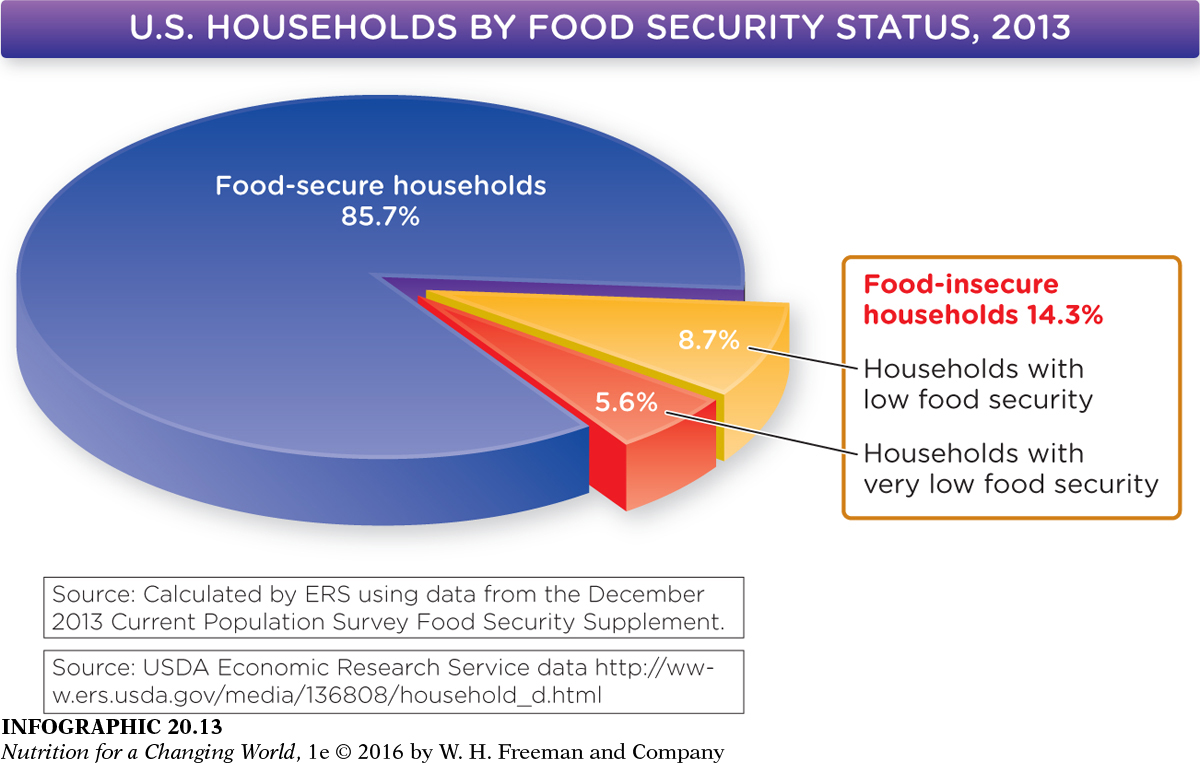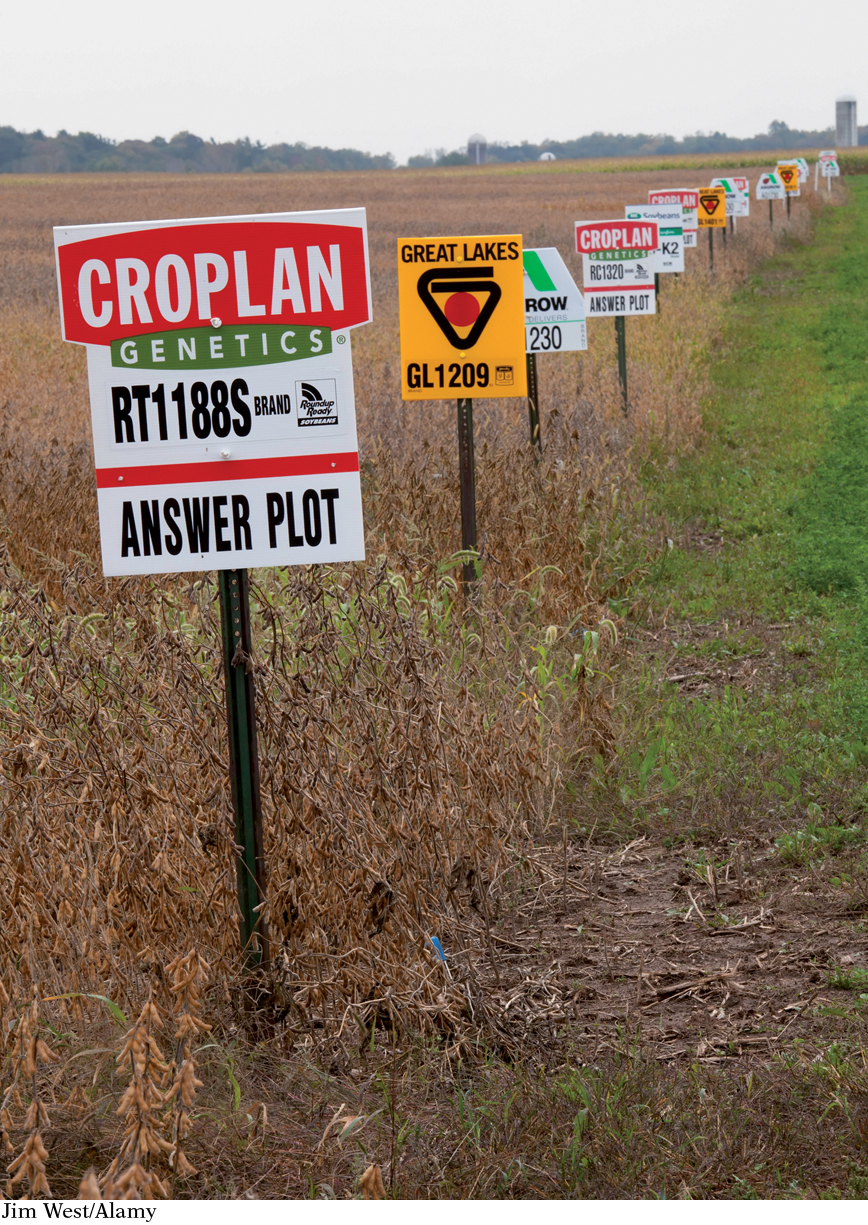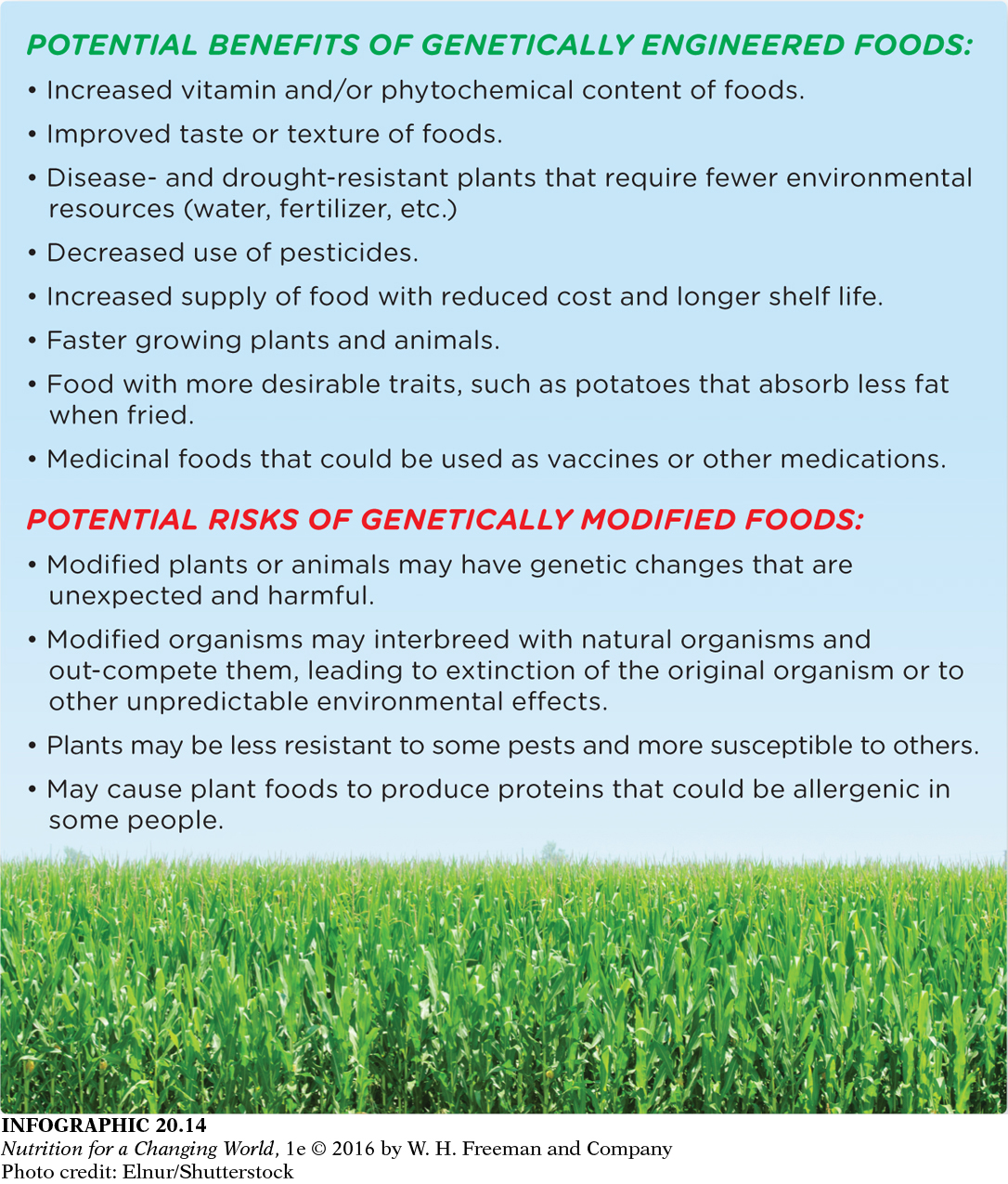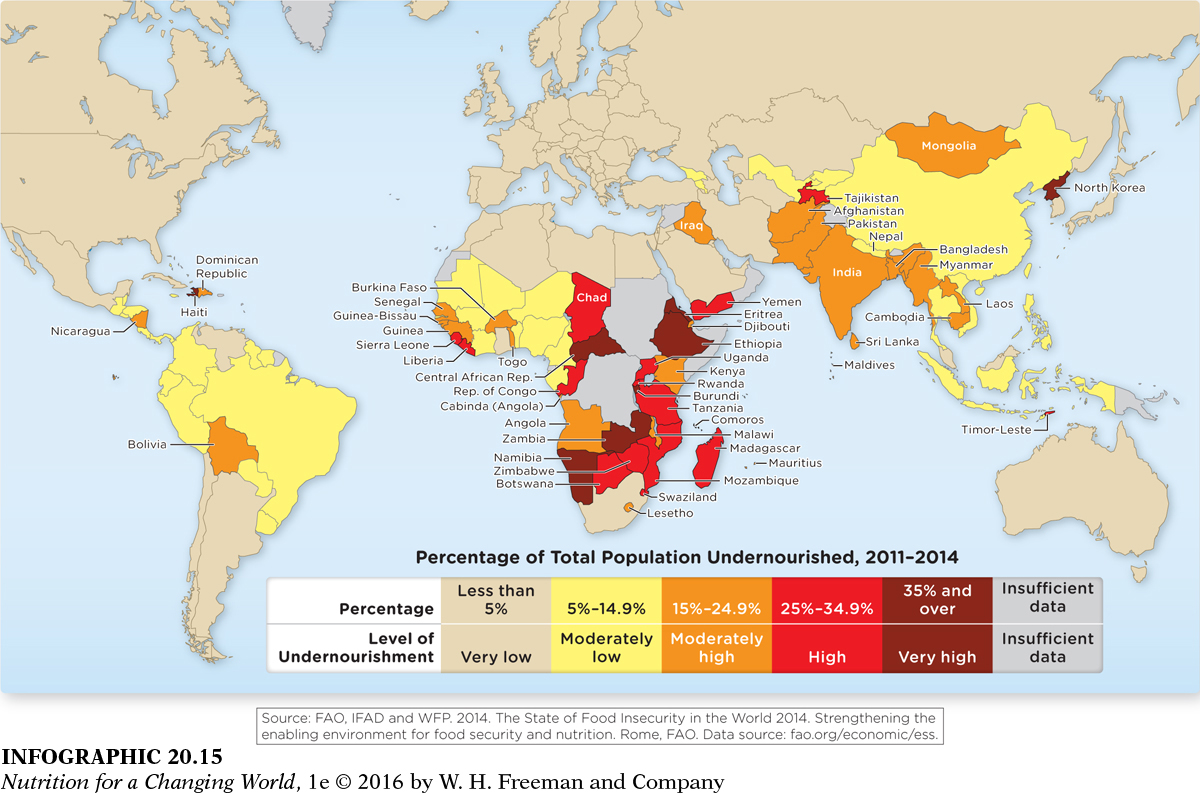BEYOND FOOD SAFETY: FOOD SECURITY
FOOD SECURITY always having physical, social, and economic access to sufficient, safe, and nutritious food that meets dietary needs and food preferences for an active and healthy life
Making sure that food is safe to consume is a critical component of feeding populations domestically and internationally. Food safety is just one dimension of food security which encompasses practices, policies, and provisions to assure that people have access to a safe, secure, nutritious, and sustainable food supply. The two topics are related because many of the food safety issues that confront modern Americans are the result of agricultural practices designed to feed an ever-
Both meat production and agriculture in this country are largely industrialized processes, operating on economies of scale. If people were still growing their own food on small farms, for instance, we wouldn’t have the potential for mass outbreaks of foodborne illness that threaten the public’s health. Some modern agricultural practices actually increase the risk that dangerous bacteria may emerge to threaten human health. The common use of antibiotics to treat livestock fed a diet of grain, for example, is a likely cause of the emergence of antibiotic-
FOOD INSECURITY lack of secure access to sufficient amounts of safe and nutritious food for normal growth and development and an active and healthy life
Conversely, food insecurity exists when people lack secure access to sufficient amounts of safe and nutritious food. According to the USDA, in 2013 14.3% of American households were uncertain of having, or were unable to acquire, enough food to meet the needs of all their members because they had insufficient money or other resources for food. (INFOGRAPHIC 20.13) For 49 million or more Americans, poverty causes compromised access to sufficient, varied, and nutritious foods.


In addition to economic status, where people live influences their food security. In Chapter 2 we examined the concept of food deserts in the United States where large, mostly poor areas had little or no access to grocery stores that sell a variety of nutrient-
OVERNUTRITION excess intake or imbalance of calories and/or essential nutrients relative to need that results in adverse health effects
UNDERNUTRITION inadequate nourishment caused by insufficient dietary intake of one or more essential nutrients or poor absorption and/or use of nutrients in the body
Food insecurity is complex and, as food deserts demonstrate, can also contribute to overnutrition—or excess intake of energy-

In the United States, several nutrition assistance programs provide supplemental food to enhance access, availability, and affordability of nutritious foods. These include the Special Supplemental Nutrition Program for Women, Infants, and Children (WIC); the National School Lunch Program (NSLP); and the Supplemental Nutrition Assistance Program (SNAP), formerly referred to as Food Stamps. SNAP is the largest program in the domestic hunger safety net. And community initiatives are being developed that strive to enhance food security and bring more diverse, healthful foods to underserved populations.
Genetically modified organisms
GENETICALLY MODIFIED ORGANISM (GMO) living organisms whose genetic material has been altered through the use of genetic engineering; GMOs are the source of genetically modified foods
These measures help ensure access to food, but they don’t address the problem of food abundance. To help increase yields, and improve crop resistance to pests, many food companies have turned to genetic engineering—
GENETICALLY MODIFIED (GM) FOODS foods derived from organisms that have had their genetic material (DNA) modified in some way that does not occur naturally; for example, through the introduction of a gene from a different organism
Examples of genetically modified (GM) foods include corn, soybeans, rice, and tomatoes. In the United States, although current federal law does not mandate the labeling of GM foods, the FDA is responsible for regulating the safety of GM crops consumed by humans or animals. (INFOGRAPHIC 20.14)

Food supply can vary globally based on many factors. For example, droughts, floods, and political instability can all affect food supply, as can climate change, dependence on fossil fuels, and loss of biodiversity. Climate change is a particularly worrisome factor, potentially affecting not only food supply but also food safety; some evidence suggests that the prevalence of several types of foodborne illness increases proportionally with average weekly temperatures.
Sustainability
A 2014 report published by the nonprofit Center for Food Safety argues that food security may be jeopardized by climate change and recommends the following: eating fresh, unprocessed foods; buying local, in-
SUSTAINABILITY the ability to meet our current needs without compromising the ability of future generations to meet their needs
Strictly speaking, sustainability means the use of resources at rates that do not exceed the capacity of Earth to replace them. For food, a sustainable system implies safety and security of the food supply, a strong food industry in terms of jobs and growth, and, at the same time, environmental sustainability in terms of biodiversity, water, and soil quality.
UNDER-
According to the 2014 Food and Agricultural Organization of the United Nations Report on Food Insecurity in the World, a total of 805 million people, or around one in nine people in the world, were estimated to be suffering from chronic hunger, regularly not getting enough food to conduct an active life. Sub-

Feeding the world and advancing food security with an expanding population will require commitment, cooperation, and innovation among citizens and scientists. Given population growth and rising incomes that provide opportunity for greater consumption of resources and consumer goods, it is estimated that the demand for food will rise by 70% to 100% by 2050. Many programs and initiatives at the national and international levels are geared toward reducing hunger and boosting food security.
If history is any guide, there will likely be more food crises, involving both safety and security, before a sustainable food culture prevails.